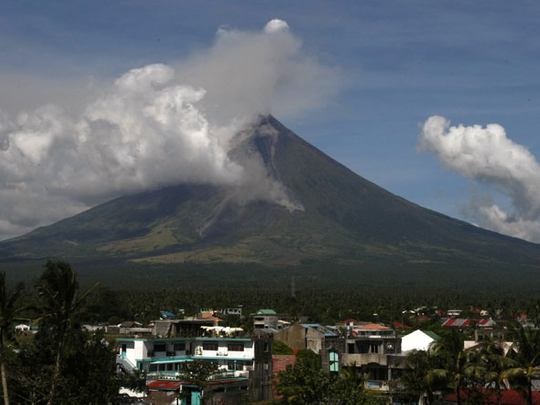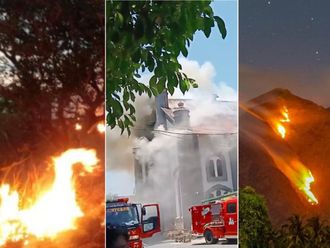
Legazpi City, Philippines: One of the Philippines' most active volcanos is showing signs of heightened unrest and an eruption is possible within weeks, government scientists warned Tuesday.
The Philippine Institute of Volcanology and Seismology (Phivolcs) raised the alert level to "critical" for Mt. Mayon in eastern Albay province late Monday after recording within a 15-hour period an escalation of unrest, including 39 incidents of hot rocks falling in the summit area and 32 low-frequency volcanic earthquakes.
The institute said molten lava and hot volcanic gases have made a glow in the 2,460-meter (8,070-foot) volcano's crater observable.
Possible eruption
"Mayon is exhibiting relatively high unrest and that magma is at the crater and that hazardous eruption is possible within weeks," the institute added in its bulletin.
Albay Gov. Joey Salceda ordered the evacuation of thousands of residents within a 6- to 8-kilometer (3.7- to 5-mile) radius of the volcano.
Disaster councils of the province and the region met to map out steps to avert casualties, said Jukes Nunez, a disaster management officer in the province.
The volcano institute said that it was important to keep people out of a "permanent danger zone" extending 6 kilometers (3.7 miles) from the mountain and 7 kilometers (4.3 miles) on the southeastern flank.
However, officials say many people venture into the area to farm or live when there is a lull in activity.
Mt. Mayon, located about 340 kilometers (210 miles) southeast of Manila, has erupted more than 40 times over the past 400 years.
Climbers killed
On May 7, 2013, the volcano spewed ash, killing five climbers, including three Germans who ventured near the summit despite the permanent danger zone.
Despite the risks, Mayon and its near-perfect cone is a favorite spot for volcano watchers.
Most enjoy the occasional nighttime spectacle of the rim lit by flowing lava, viewing from the safety of hotels in Albay's capital, Legazpi.











